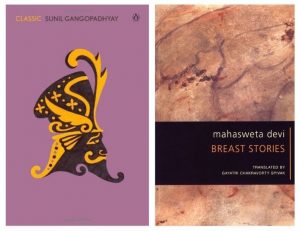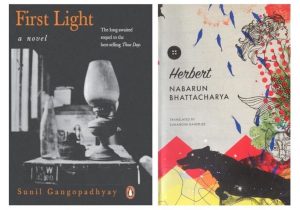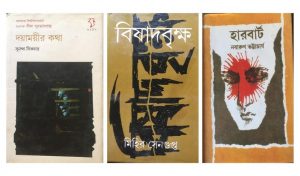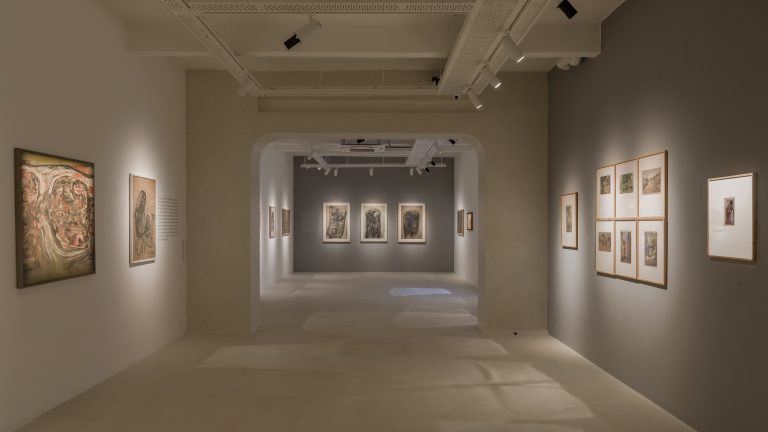David Davidar is a pioneer of modern English language publishing in India, who has not only published many of the finest Indian writers in English, but also opened the doors to the publication of literature in other Indian languages in English translation on an industrial scale. And both at Penguin Books India and, now, at the Aleph Book Company, Davidar has been responsible for publishing some of the most important works of Bengali literature. What is his relationship with books from Bengal? Excerpts from a conversation over lunch.

Arunava Sinha (AS): David, you have published a great deal of Bengali literature in translation. What drew you to Bengali fiction in particular?
David Davidar (DD): I think it’s almost impossible, as a publisher of literature of Indian literature, to not have an overwhelming amount of Bengali writers on your list, because Bengal is home to one of the most important bodies of literature in India in many ways. I am talking about prose, because I have not published much else.
Bengal was where you had the first great flowering of Indian literature. You had people like Michael Madhusudan Dutt, who are of historical importance in literature, though I don’t think too many Bengali readers or even others are reading him in translation now. But then there was obviously the great Rabindranath Tagore. And then Sarat Chandra Chattopadhyay, Bibhutibhushan Bandyopadhyay, and all those who followed in the early twentieth century. And all of them continue to be read.
That is something you can’t say for some of the other literatures of India, where even the pioneers and the great writers are not read by too many other people. But I have read these Bengali writers from the time I was a young reader, especially the great classics by the likes of Tagore. Kabuliwala, for instance, which every Indian child who reads has read at some point.
And Bengal, of course, was on top of every new wave of literature. Most important, the works used to travel to other parts of India. Pather Panchali is something everyone knows of, if they haven’t read the book they’ve watched the movie. This is true of Devdas too. That is how Bengali literature has been disseminated across a variety of media.
I am also thinking here of people whom I personally enjoyed besides Tagore and Bankim Chandra Chattopadhyay, like Sarat Chandra, Bibhutibhushan, Tarashankar Bandyopadhyay, Manik Bandyopadhyay. The Padma River Boatman was one of the books that I published.
Then you had Sunil Gangopadhyay, Buddhadeva Bose, Premendra Mitra… Pritish Nandi told me that the greatest short story in the Bengali language was written by Premendra Mitra, The Discovery of Telenapota. I am not sure if it is the greatest story but certainly one of the greatest.
And then there was Mahasweta Devi. For my money I think she is the greatest short story writer in this country. All her stories have such a great punch to them, and they are almost timeless. Even if they were written thirty or forty years ago they are still relevant today.
These are the writers I have greatly admired and published.
I think quiet books or books of historical importance are not the way to go. In my view the latter are fine for the Sahitya Akademi, for example, or other quasi government publishers who are charged with preserving the country’s heritage. For publishers like us, the job is to publish books that are great, and I find that in a very degraded age, where literature has been pushed to the margins, it’s incumbent on all of us to be smart about what tools we use to publish.
We have to think about how we might disseminate literature that can travel. So it is in this context that I’ve been a passionate fan of Bengali writing, in translation, of course, for I have not read the originals. I have found in it a tremendous amount of diversity and different forms.
AS: You mentioned that historical literature may have a place elsewhere, and yet the two of the most successful translations you published in the 1990s were both historical fiction: Sunil Gangopadhyay’s Those Days and First Light.
DD: By historical fiction I do not mean works with historical settings written in a modern hand, but books of historical interest. Michael Madhusudan Dutt, for example, or other books written in the nineteenth century, unless there’s something very dramatically radical about a new translation, as is the case with, say, new translations of Don Quixote.
AS: Is there something special about Bengali literature that makes it travel?
DD: What is unique about it is the excellence across generations. And the sheer number of people who wrote well. I can’t speak for now, but this was valid till as recently as twenty years ago. I can think of Hindi, Urdu, Malayalam, and Tamil and Marathi to some extent that compare very well with Bengali literature, Malayalam in particular, but it is the excellence and the width that make it so pervasive.
I think the books that travel are books of tremendous ambition. That’s true of any literature, of course. That it should have a good story and that the writer should have tremendous ambition and talent. Such books tend to have a big audience in their own language to begin with, and then there’s the ripple effect. And because Bengal has an enormous number of writers, there are always enough who rise above their immediate environment.

AS: Have you identified anything distinctive about Bengalis as a people as seen through your reading of Bengali literature?
DD: No. The stereotypes are there, the Bengali babu or the firebrand, but Bengalis in Bengali literature shape shift so effortlessly and Bengali writers are so ambitious that they shake off stereotypes. So I would not be able to form a picture of the average Bengali by reading across Bengali fiction. Even in the case of the novels that are strong on social realism, where the sense of place and time is often overpoweringly strong, the characters are memorable enough to rise above these things.
To be sure, there is no escaping the fact that each novel was written in a particular time and place. So, given the fact that Bengali literature is so wide-ranging, if you take its entire range, you will certainly form an idea of Bengali history and Bengali society. Bengali writers wrote about virtually everything.
AS: If you were to replace your publisher-editor’s hat with that of a reader’s, what are the standout works of Bengali literature for you?
DD: Mahasweta Devi’s stories, as I mentioned. And definitely the works of Satyajit Ray for young adults. His Feluda, Professor Shanku, and science fiction stories are rather good. Then there’s Tagore definitely, but more for historical interest than as someone who will appeal to today’s reader. I mean you have to read him because is part of the canon, among other things. Among the others, the works of Premendra Mitra, Buddhadeva Bose, specific works of Sunil Gangopadhyay—Shei Shomoy (Those Days)—and Bibhutibhushan’s Apu novels.
AS: Why do you consider Mahasweta Devi India’s best short story writer?
DD: Her unflinching gaze. She is not an easy read by any means, but she is effortlessly literary. Her writing is so very powerful.

AS: You are a novelist yourself. So what do you think of Bengali literature as a writer?
DD: I think as a writer one is in awe of certain Bengali writers for a number of reasons. A lot of us who write in English are quite deracinated, and we shouldn’t be. Because our experience of our country is as valid as that of someone who’s living in a village writing in Telugu, for instance. But that’s not the way you are seen so there is this whole thing about who can write about India.
I don’t care who writes about India, so long as they can write authentically and well, by which I mean plausibly. So Satyajit Ray, for instance, can write plausibly about an eccentric scientist. I think that is the test of a writer. Or Mahasweta Devi, because she has translated a passion, a commitment, an immersion in a certain kind of India into such powerful fiction.
I admire people who write about villages and small towns in a way that does not glamourize the village as a Utopian bucolic heaven, but actually talk about its realities, the violence, the prejudices. These are the things I admire about some of the best Bengali writers.














